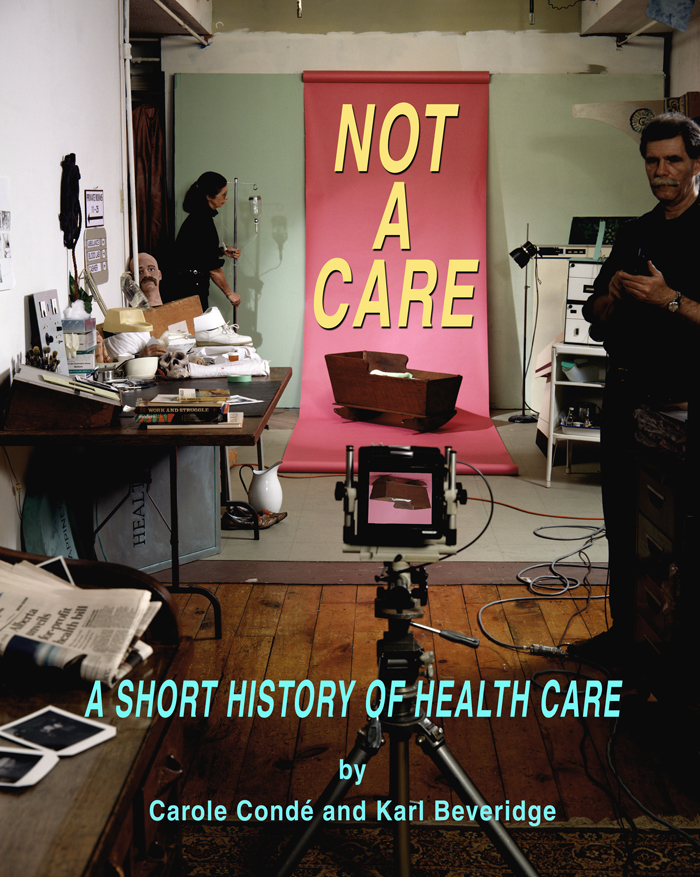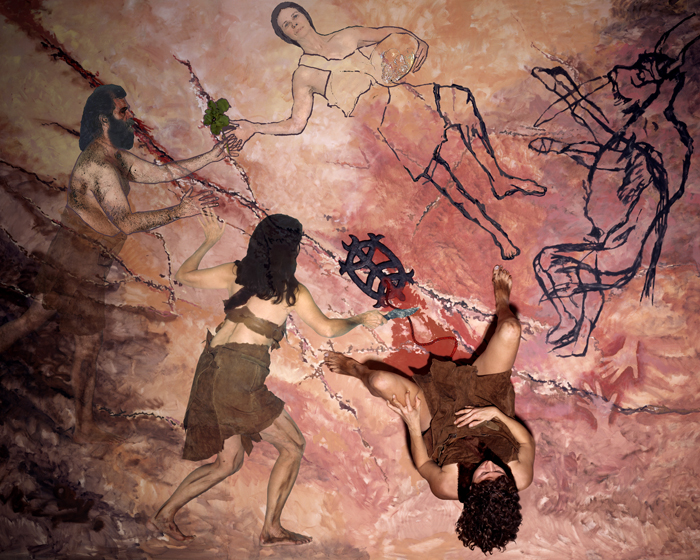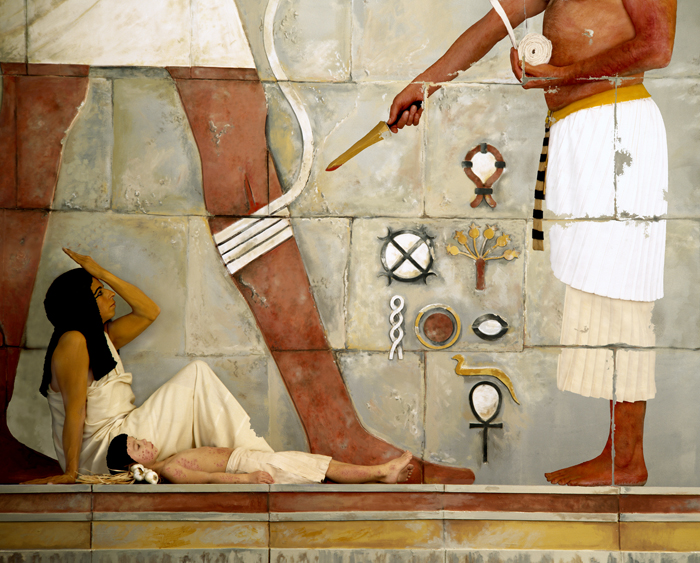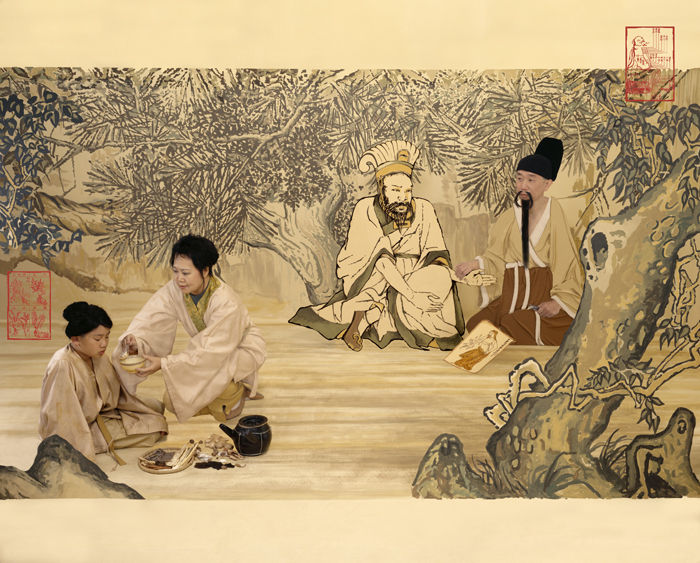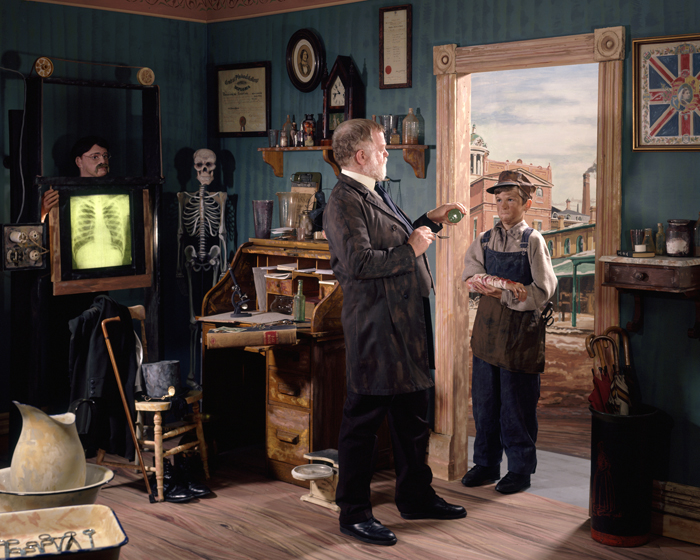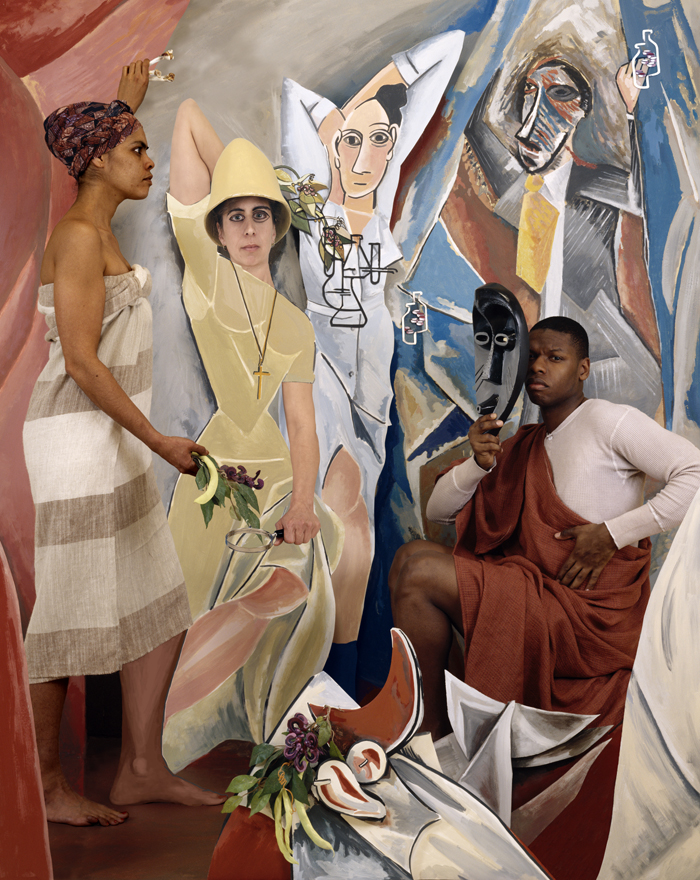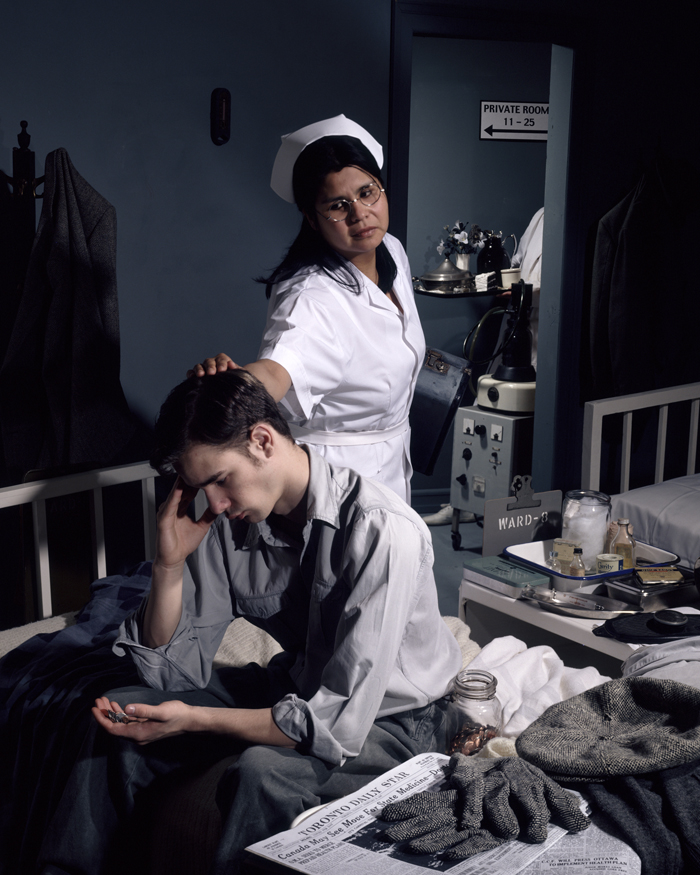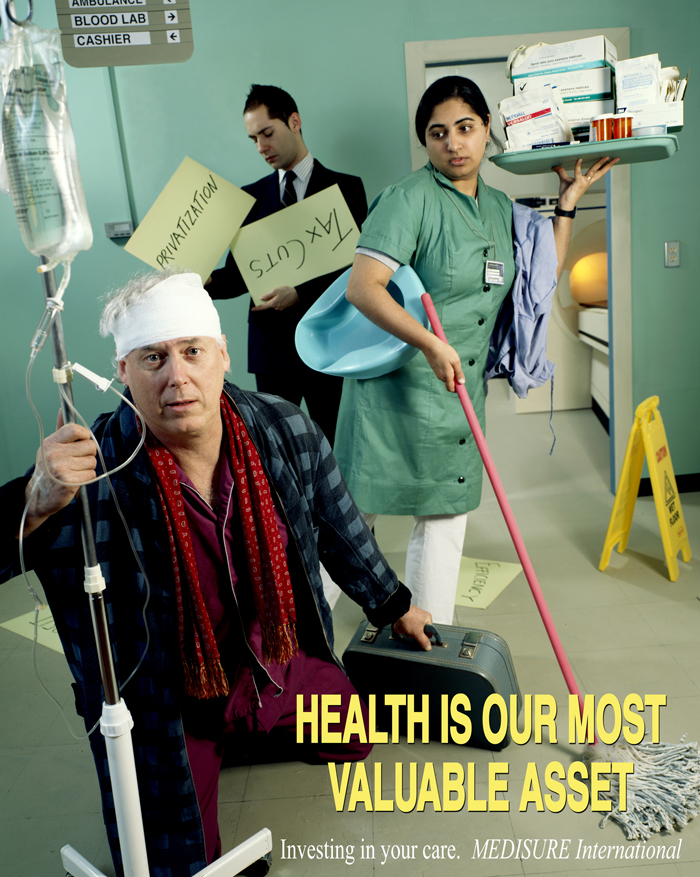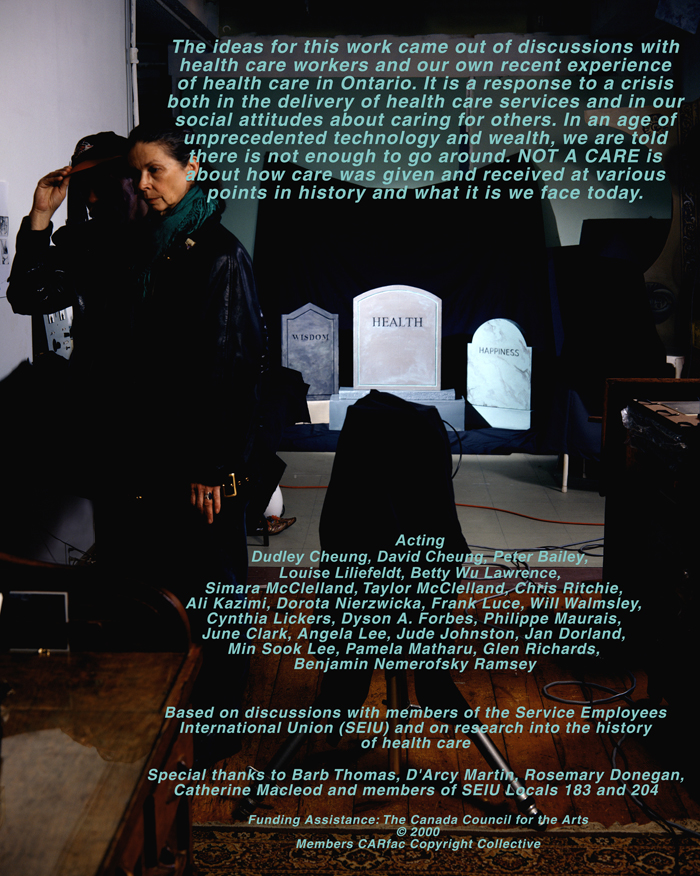Not a Care: A Short History of Health Care (1999) In 1998–99, Condé and Beveridge participated in a number of union educational workshops held for health care workers, members of the Service Employees International Union (SEIU). The artists talked with them about their jobs and the current heath care crisis in Canada. Based on these conversations and from additional research into the history of health care, it became apparent that there had been a fundamental shift in attitudes about caring. The concept behind the project was triggered by the oft repeated comment by older health care workers that they were not able to give the same quality of care they were able to 20 years before. Many of these workers resented the fact that they were not able to give the care they were trained to do, which had been the reason why many of them had originally entered the field.
‘Not a Care…’ is a history of caring from early times up to the present health care crisis in Canada. A series of 12 images depict how people were cared for at various points in history and follows a patient growing up from birth through to old age. A caregiver is portrayed from each period along with the relevant medical technology (flint knives to CAT scans) and medicine (herbs to pills) and who, in each case, benefited from them.
The first image depicts a communal birth and is based on early European cave paintings. The second portrays a poor child who has the pox and a Pharaoh undergoing surgery. It is based on an Egyptian wall relief. The third recreates on a 11th century scroll by Li Tang and depicts a child receiving herbal medicines while a noble has his pulse taken and undergoes acupuncture. The fourth is based on an early 15th century painting by Fra Angelico, The Annunciation, and depicts a boy, who has the plague, seeking help from a church hospital, while an aristocrat receives care from an Arab physician. The fifth portrays a doctor giving a spoonful of medicine to a young worker who has come to his door while a wealthy businessman is being x-rayed. It is based on realist paintings from the 1890′s. The sixth recreates Picasso’s Les Demoiselles d’Avignon (1907) and depicts the appropriation of herbal remedies by European business interests. The seventh image depicts a young man who is unable to pay for his hospital bed and is based on a Life magazine photo by Eugene Smith published in the late 1940′s. The eighth image portrays the introduction of Canadian medicare in the 1960′s and references to Andy Warhol’s photo silk-screens. The ninth image is a play on 1990′s advertising and shows an older patient, IV in hand, being discharged early from a hospital. The last image depicts a contemporary street patrol worker bringing food to an aged man sleeping in a bus shelter.
The series is framed by a title image that reveals the artists’ studio with a set featuring a cradle and a final credit image that shows a grave. They refer to the early dream of socialized medicine: that of universal care from cradle to the grave.

